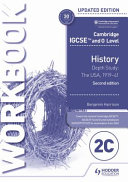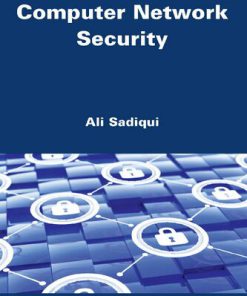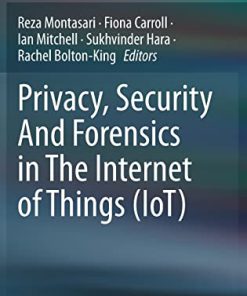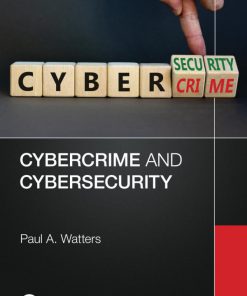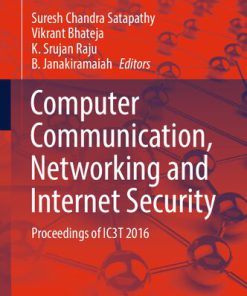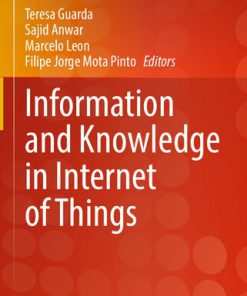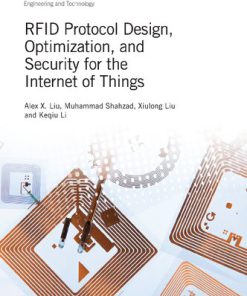Cybercrime and Information Technology The Computer Network Infrastructure and Computer Security Cybersecurity Laws Internet of Things IoT and Mobile Devices 1st Edition by Alex Alexandrou ISBN 1000426920 9781000426922
$50.00 Original price was: $50.00.$25.00Current price is: $25.00.
Cybercrime and Information Technology: The Computer Network Infrastructure and Computer Security, Cybersecurity Laws, Internet of Things (IoT), and Mobile Devices 1st Edition by Alex Alexandrou – Ebook PDF Instant Download/Delivery: 1000426920, 9781000426922
Full download Cybercrime and Information Technology: The Computer Network Infrastructure and Computer Security, Cybersecurity Laws, Internet of Things (IoT), and Mobile Devices 1st Edition after payment
Product details:
ISBN 10: 1000426920
ISBN 13: 9781000426922
Author: Alex Alexandrou
Cybercrime and Information Technology: The Computer Network Infrastructure and Computer Security, Cybersecurity Laws, Internet of Things (IoT), and Mobile Devices 1st Edition:
Cybercrime and Information Technology: Theory and Practice―The Computer Network Infostructure and Computer Security, Cybersecurity Laws, Internet of Things (IoT), and Mobile Devices is an introductory text addressing current technology, trends, and security issues.
While many books on the market cover investigations, forensic recovery, and presentation of evidence, and others explain computer and network security, this book explores both, explaining the essential principles governing computers, wireless and mobile devices, the Internet of Things, cloud systems, and their significant vulnerabilities. Only with this knowledge can students truly appreciate the security challenges and opportunities for cybercrime that cannot be uncovered, investigated, and adjudicated unless they are understood.
The legal portion of the book is an overview of the legal system in the United States, including cyberlaw standards, and regulations affecting cybercrime. This section includes cases in progress that are shaping and developing legal precedents. As is often the case, new technologies require new statues and regulations―something the law is often slow to move on given the current speed in which technology advances.
Key Features:
- Provides a strong foundation of cybercrime knowledge along with the core concepts of networking, computer security, Internet of Things (IoTs), and mobile devices.
- Addresses legal statutes and precedents fundamental to understanding investigative and forensic issues relative to evidence collection and preservation.
- Identifies the new security challenges of emerging technologies including mobile devices, cloud computing, Software-as-a-Service (SaaS), VMware, and the Internet of Things.
- Strengthens student understanding of the fundamentals of computer and network security, concepts that are often glossed over in many textbooks, and includes the study of cybercrime as critical forward-looking cybersecurity challenges.
Cybercrime and Information Technology is a welcome addition to the literature, particularly for those professors seeking a more hands-on, forward-looking approach to technology and trends. Coverage is applicable to all forensic science courses in computer science and forensic programs, particularly those housed in criminal justice departments emphasizing digital evidence and investigation processes. The textbook is appropriate for courses in the Computer Forensics and Criminal Justice curriculum, and is relevant to those studying Security Administration, Public Administrations, Police Studies, Business Administration, Computer Science, and Information Systems.
A Test Bank and chapter PowerPoint slides are available to qualified professors for use in classroom instruction.
Cybercrime and Information Technology: The Computer Network Infrastructure and Computer Security, Cybersecurity Laws, Internet of Things (IoT), and Mobile Devices 1st Edition Table of contents:
CHAPTER 1: Understanding Essential Computer Concepts
Objectives
-
1.1 Understanding Computation
- Conventional Computer Systems
-
1.2 Input
- Understanding Binary Data
- Conversion from Binary to Decimal
- Conversion from Decimal to Binary
- Hexadecimal
- Converting from Hexadecimal to Binary
- Conversion from Binary to Hexadecimal
- ASCII, EBCDIC, and UNICODE
-
1.3 Processing
- Boolean Algebra, Logic Gates, and Truth Tables
- Processor Types (32-bit Processors vs 64-bit Processors)
-
1.4 Storage
- Compression
- Lossy Compression
- Lossless Compression
- Compression
-
1.5 Output
- Pixels
- Color Depth
- Color Models
- Screen Resolution
-
1.6 Beyond Conventional Computing
- Quantum Computing Is Poised to Change Everything
-
1.7 A Brief History of Computing Devices
-
1.8 Conclusion
-
1.9 Key Words
CHAPTER 2: Cybercrime in a Data-Driven and Techno-Centric Society
Objectives
-
2.1 Cybercrime and the Cybercriminal
-
2.2 The Origin and Definition of Cybercrime – It’s the Data, Always the Data
-
2.3 Brief Summary of the Phases and Evolution of Cybercrime
- Phase I
- Phase II
- Phase III
- Phase IV
-
2.4 Cybercrime Categories
- The Three Cybercrime Categories
-
2.5 The Future of Cybercrime
- The Making of the Cybercriminal
- Cybercrime and the Internet of Things (IoT)
- Cybercrime: Machine Learning and Artificial Intelligence
- Online Child Sexual Abuse and Exploitation (CSAE)
- Cost of Cybercrime
- The Role of Cryptocurrency in Cybercrime
- State-Sponsored Cyberwarfare and Industrial Espionage
-
2.6 Conclusion
-
2.7 Key Words
CHAPTER 3: Understanding the U.S. Legal System
Objectives
-
3.1 Introduction
- Jurisdiction and Extradition
- Online Anonymity
- Digital Evidence
- Most Cybercrimes Are not Reported
-
3.2 A Brief Overview of the Legal System in the United States
- The Constitution
- Statutory or Statute Law
- Administrative Laws (Agency Regulations) and Ordinance Law
- Judicial Decisions or Precedents or Case Law
-
3.2.1 The Courts System
-
3.3 Types of Laws
- Administrative Law
- Civil Law
- Criminal Law
-
3.4 Conclusion
-
3.5 Key Words
CHAPTER 4: Laws, Standards, and Regulations Affecting Cybercrime
Objectives
-
4.1 Introduction
- Current Legislative Framework in the United States
-
4.2 Anti-Hacking Laws
- The Federal Computer Fraud and Abuse Act
- Computer Hacking Laws from Individual States
- The Economic Espionage Act of 1996 (EEA)
- The Digital Millennium Copyright Act
-
4.3 Data Security Laws and Regulations in the Private Sector Entities
- The National Institute of Standards and Technology Cybersecurity Framework
- Laws Dealing with Healthcare
- Health Information Technology for Economic and Clinical Health Act
- Protecting Consumers’ Privacy Rights with FTC’s Section 5: Federal Trade Commission Act
- Laws Affecting Financial Institutions
- Laws Affecting Utilities
-
4.4 Public and Private Sector Entities Partnerships in Cyberspace
- Cybersecurity Information Sharing Act of 2015 (CISA)
- The Cybersecurity and Infrastructure Security Agency
- The National Cybersecurity and Critical Infrastructure Protection Act of 2014 (NCPA)
- Cybersecurity Enhancement Act of 2014 (CEA)
-
4.5 Cybersecurity Requirements for Federal Government Contractors
- Federal Information Security Modernization Act of 2014
- NIST Information Security Controls for Government Agencies and Contractors
-
4.6 Most Important Internet Surveillance Laws in the United States
- All Writs Act
- Fourth Amendment
- Electronic Communication Privacy Act of 1986
- Communication Assistant for Law Enforcement Act of 1994 (CALEA)
-
4.7 Key Privacy Laws in the United States
- Privacy Act of 1974
- Controlling the Assault of Non-Solicited Pornography and Marketing Act of 2003 (CAN-SPAM Act)
- 18 U.S.C. § 1037 Fraud and Related Activity in Connection with Electronic Mail
- 18 U.S.C. § 1029 Fraud and Related Activity in Connection with Access Devices
- 18 U.S. Code §1028 Fraud and Related Activity in Connection with Identification Documents, Authentication Features, and Information
- Children’s Online Privacy Protection Act of 1998
- Video Privacy Protection Act (VPPA) of 1988
-
4.8 Conclusion
-
4.9 Key Words
CHAPTER 5: The Networking Environment
Objectives
-
5.1 Introduction to Computer Networking
- Protocols
- The World Wide Web and the Internet
- Advantages and Disadvantages
- Essential Computer Network Components and Terminology
- Basic Anatomy of IPv6
- Using Network Utilities
-
5.2 Types of Networks
-
5.3 Network Topology
-
5.4 The Open Systems Interconnection (OSI) Model
-
5.5 The Internet Protocol Suite (TCP/IP)
- TCP
- UDP
-
5.6 How Everything Works Together on the Internet: A Review
-
5.7 Conclusion
-
5.8 Key Words
People also search for Cybercrime and Information Technology: The Computer Network Infrastructure and Computer Security, Cybersecurity Laws, Internet of Things (IoT), and Mobile Devices 1st Edition:
is cybercrime and computer crime the same
definition for cybercrime
cybercrime and digital forensics an introduction
cybercrime and digital forensics
cybercrime and digital investigation
cybercrime and digital forensics pdf
Tags:
Alex Alexandrou,Cybercrime,Information,Technology,Computer Network,Infrastructure,Computer Security,Cybersecurity Laws,Internet of Things
You may also like…
Education Studies & Teaching - Studying & Test Preparation
Computers - Security
Computers - Security
Computers - Databases
Uncategorized
Computers - Databases
Information and Knowledge in Internet of Things Teresa Guarda (Editor)
Engineering - Robotics & Artificial Intelligence
RFID Protocol Design Optimization and Security for the Internet of Things Alex X. Liu
Computers - Security




